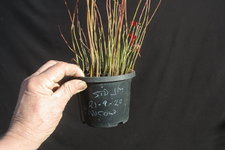Aphystic
Yamadori
I’m not sure if I’m bad at the search function on this website but I have been struggling to find detailed information about collecting and growing a bonsai from a blue atlas cedar cone/seeds.
(I can’t find any retailer that will ship a live blue atlas cedar nor seeds to Sweden. Hence why I’ll try another route)
Maybe someone who has done it can chime in?
How do I collect seeds, how should they look, how should they be stored and how and when should they be planted? (What kind of soil, pot size, indoor with grow light, outdoor? At what temperature, when etc?)
My parents will be travelling from Sweden to Poland, Czechia, Italy and then back by car. Maybe there’s someway along the way or just place with plenty of blue atlas cedar?
(I can’t find any retailer that will ship a live blue atlas cedar nor seeds to Sweden. Hence why I’ll try another route)
Maybe someone who has done it can chime in?
How do I collect seeds, how should they look, how should they be stored and how and when should they be planted? (What kind of soil, pot size, indoor with grow light, outdoor? At what temperature, when etc?)
My parents will be travelling from Sweden to Poland, Czechia, Italy and then back by car. Maybe there’s someway along the way or just place with plenty of blue atlas cedar?
Last edited:




